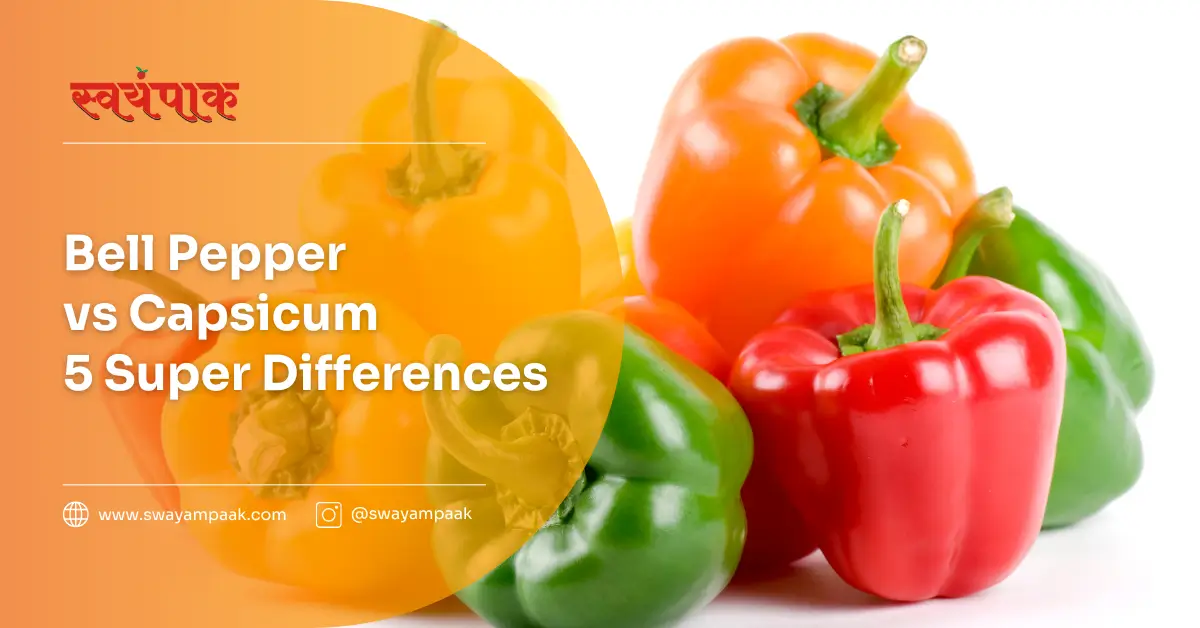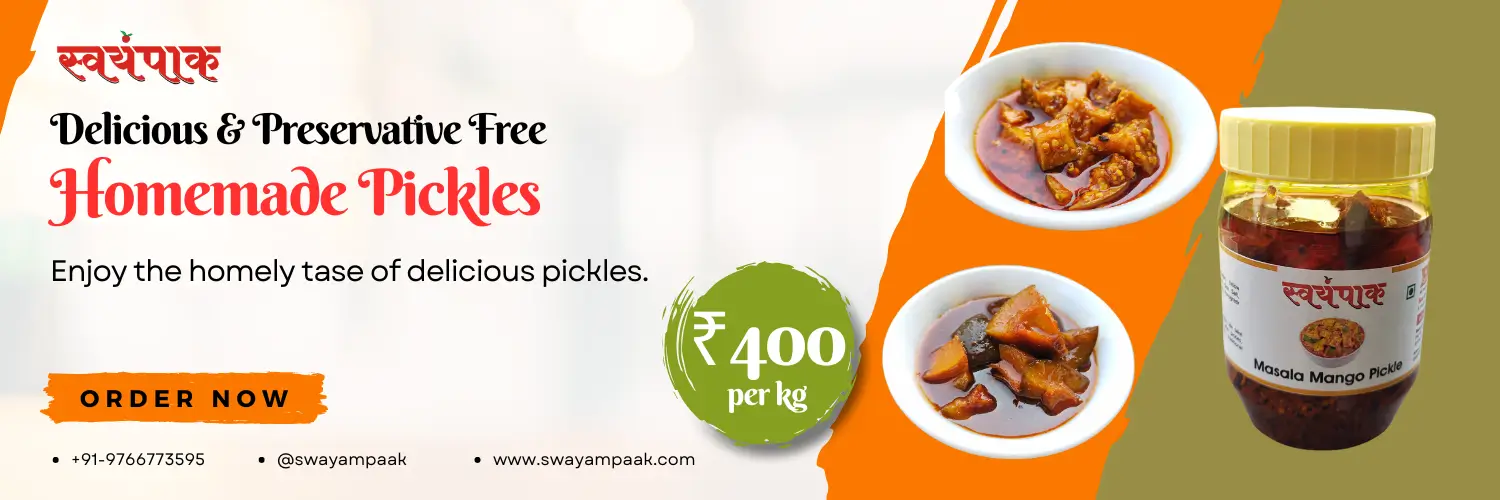Ever wondered if there’s a difference between a bell pepper and a capsicum? You’re not alone! These crisp, colourful veggies are kitchen staples, but their names can get confusing.
In this article Bell Pepper vs Capsicum, we’ll peel back the layers and reveal the truth behind bell peppers and capsicums. We’ll explore their origins, delve into their delicious world, and help you choose the perfect pepper for your next culinary creation. So, get ready to spice up your knowledge as we settle the bell pepper vs capsicum debate!
10 key takeaways from the blog Bell Pepper vs Capsicum:
- Capsicum (pronounced KAP-si-kum) is a genus of flowering plants in the nightshade family, encompassing a wide variety of peppers. Bell peppers are just one type of capsicum.
- The word “capsicum” comes from Latin, referencing the pod-like shape of many peppers. Capsicums come in all shapes, sizes, and heat levels, including some purely ornamental varieties.
- Bell peppers are a specific type of capsicum bred for sweetness and mildness. They have a distinctive bell shape and come in various colours (green, yellow, orange, red).
- The colour variation in bell peppers reflects ripeness. Green ones are harvested early, while coloured peppers are allowed to mature for a sweeter taste.
- Bell peppers lack the heat-inducing compound capsaicin, making them versatile in the kitchen. They add a delightful crunch and sweetness to salads, stir-fries, and other dishes.
- To add heat to your dishes, explore other capsicum varieties. Jalapeños offer medium heat, while habaneros pack a serious punch.
- The Scoville scale measures the heat level of peppers. Bell peppers rank very low, while habaneros and the Carolina Reaper (the hottest pepper) can reach scorching heights.
- Peppers originated in the Americas over 6,000 years ago and became a prized spice across the globe.
- Bell peppers are a nutritional powerhouse, rich in vitamins C and A, folate, vitamin B6, and fibre. coloured varieties are particularly high in lycopene, an antioxidant.
- Next time you reach for a pepper, you’re not just adding flavour, you’re experiencing a touch of history and culinary diversity! Explore the exciting world of capsicums and share your favorite pepper recipe!
| Feature | Bell Pepper | Capsicum |
|---|---|---|
| Common Name | Bell pepper, sweet pepper | Capsicum (general term) |
| Variety | Green, red, yellow, orange | Includes bell peppers and other chili peppers |
| Heat Level | Mild or sweet | Varies from mild to extremely hot |
| Culinary Use | Salads, stir-fries, roasting | Wide variety of uses depending on the type |
Bell Pepper vs Capsicum
What is a Capsicum?
The word “capsicum” (pronounced KAP-si-kum) might sound fancy, but it simply refers to a whole genus of flowering plants in the nightshade family. Think of it like a big family tree, and each variety of capsicum is a unique branch!
The origin of the word itself is rooted in Latin, with “capsa” meaning “box” – likely referencing the pod-like shape of many capsicum fruits. But don’t be fooled by their appearance! This genus boasts a surprising amount of diversity.
Within the capsicum family, you’ll find the sweet and crunchy bell peppers we all know and love. But the heat doesn’t stop there. Jalapeños, with their kick, and habaneros, notorious for their fiery punch, are also capsicums. Believe it or not, some capsicum varieties are even purely ornamental, grown for their vibrant colours and unique shapes! So, the next time you reach for a pepper, remember – you’re holding a member of a vast and fascinating capsicum clan.
What is a Bell Pepper?
Unlike its fiery cousins, the bell pepper is the mild-mannered sweetheart of the Capsicum clan. It’s a cultivar, meaning a specific type of capsicum bred over generations to have desirable traits.
The name “bell pepper” is a dead giveaway! These peppers boast a distinctive, bell-shaped body, with smooth, glossy skin. But don’t be fooled by their green beginnings.
Bell peppers come in a vibrant rainbow – from the classic emerald green to the sunshine yellow, fiery red, and sunny orange. This colour variation isn’t just aesthetic; it reflects the pepper’s ripeness. Green bell peppers are harvested early, while their coloured counterparts are allowed to mature on the vine, resulting in a sweeter flavour.
Speaking of flavour, bell peppers are renowned for their mild and sweet taste. Unlike their spicier capsicum relatives, they lack the heat-inducing compound capsaicin. This makes them incredibly versatile in the kitchen, adding a touch of sweetness and a satisfying crunch to salads, stir-fries, and countless other dishes.
Are They the Same?
So, here’s the thing that gets everyone riled up: are bell peppers and capsicums the same? The answer, like most things in life, is a delicious shade of “it depends.”
Here’s where a little scientific breakdown comes in handy. Imagine the capsicum family as a big umbrella. Under this umbrella, you’ll find a variety of peppers, each with its own unique characteristics. Bell peppers, with their sweetness and iconic bell shape, are just one specific type – a cultivar within the capsicum genus.
Think of it like this: all dogs are canines, but not all canines are dogs. Poodles, Great Danes, and Chihuahuas are all different dog breeds, but they all fall under the broader category of “canines.” Similarly, bell peppers are a specific type of capsicum, bred for their mildness and sweetness.
So, the confusion arises because depending on location, “capsicum” can be used as a general term for any capsicum pepper, including bell peppers. But technically, bell pepper is just a delightful member of the much larger capsicum family tree.
What & When to Use? Bell Peppers vs Capsicum
Now that we’ve untangled the “bell pepper vs capsicum” debate, let’s explore how to use these versatile peppers in the kitchen! The beauty of the capsicum family lies in its incredible range. Bell peppers may be the mild stars, but remember, capsicums come in all heat levels.
Bell peppers, with their sweetness and lack of heat, are culinary chameleons. Their crisp texture and vibrant colours make them perfect for adding a delightful crunch to salads, stir-fries, and crudités. They can also be roasted, stuffed, or grilled, taking on a smoky depth of flavour.
If you crave a fiery kick, venture beyond the bell pepper. Jalapeños, with their medium heat, add a lively zing to salsas, tacos, and guacamole. For those who like it seriously hot, habaneros pack a punch that’s perfect for fiery curries, hot sauces, or wings. Remember, the Scoville scale measures the heat of peppers, so choose your capsicum based on your desired spice level!
Here are some pointers to get the most out of your bell peppers:
Choosing:
- Colour: Red, orange, and yellow bell peppers are typically sweeter than green ones because they are riper. Green peppers can have a slightly bitter taste. Choose the colour based on the desired sweetness and flavour profile for your dish.
- Ripeness: Look for firm peppers with smooth, shiny skin. Avoid peppers with wrinkles, soft spots, or blemishes.
- Size: The size doesn’t affect taste, but consider how you’ll be using them. Larger peppers are good for stuffing, while smaller ones are ideal for chopping into salads or stir-fries.
Prepping:
- Washing: Always wash bell peppers before using them regardless of how you plan to eat them.
- Seeding: Use a sharp knife to cut around the stem and remove the core and seeds. Wear gloves if you have sensitive skin, as the capsaicin (the compound that gives chilli peppers their heat) can irritate your hands.
- Cutting: Bell peppers are quite versatile when it comes to cutting. You can slice them into rings, strips, cubes, or even dice them finely.
Using:
- Raw: Bell peppers are delicious when raw and add a nice crunch to salads, sandwiches, or veggie platters.
- Cooked: There are many ways to cook bell peppers. Sautéing, stir-frying, roasting, and grilling are all popular methods. Each method brings out a slightly different flavour profile.
- Sautéing/Stir-frying: Cut bell peppers into strips and cook them quickly over medium-high heat to retain their crispness.
- Roasting: Roasting bell peppers deepens their flavour and gives them a slightly smoky taste. Simply halve or quarter them, place them cut-side down on a baking tray, and roast at 200°C (400°F) for 20-25 minutes or until softened and blistered. You can then peel off the skins if desired.
- Grilling: Grilling bell peppers add a nice charred flavour. Grill them whole or cut them in half until softened and slightly blackened.
- Flavour Pairings: Bell peppers pair well with a variety of ingredients, including onions, garlic, tomatoes, cheese, eggs, and meats like chicken and sausage.
- Leftovers: Store leftover cooked bell peppers in an airtight container in the fridge for up to 3 days.
Fun Facts About Peppers!
Did you know peppers originated in the Americas? Archaeological evidence suggests peppers were cultivated in Central and South America over 6,000 years ago! They eventually made their way to Europe through trade routes, becoming a prized spice and a key ingredient in many cuisines.
Bell peppers, despite their sweetness, are actually a nutritional powerhouse. They’re bursting with vitamins C and A, and contain good amounts of folate, vitamin B6, and fibre. coloured bell peppers are particularly rich in lycopene, an antioxidant linked to various health benefits.
Speaking of heat, let’s talk spice! The Scoville scale is the way to measure a pepper’s heat level. Bell peppers rank very low on the Scoville scale, while habaneros can reach scorching heights. The hottest pepper in the world, the Carolina Reaper, can measure over 2 million Scoville Heat Units (SHU) – that’s seriously hot! So next time you reach for a pepper, you’re not just adding flavour, you’re adding a touch of history and a burst of fiery (or not-so-fiery) fun!
Conclusion
So, to recap, bell peppers are a sweet and mild type of capsicum, while capsicum itself is a whole genus encompassing a wide range of peppers, from the fiery jalapenos to the purely ornamental varieties. The confusion arises because “capsicum” can be used as a general term for any capsicum pepper, including bell peppers.
Now that you’re armed with this knowledge, why not delve deeper into the exciting world of capsicums? Explore different pepper varieties at your local farmers market, or experiment with incorporating them into your favourite dishes. Bell peppers are a great starting point for their versatility, but don’t be afraid to branch out and try a jalapeno for a kick or a poblano for a smoky flavour.
Ready to put your newfound pepper knowledge to the test? Share your favourite pepper recipe in the comments below and inspire your fellow food enthusiasts!
FAQs related to Bell Pepper vs Capsicum
1. Are bell peppers and capsicums the same thing?
Technically, no. Bell peppers are a specific type of capsicum (a cultivar) bred for sweetness and mildness. Capsicum is a whole genus encompassing a vast variety of peppers, including bell peppers, jalapeños, habaneros, and even ornamental ones.
2. Why are bell peppers called capsicums in some places?
Because “capsicum” can be used as a general term for any capsicum pepper, including bell peppers. This can lead to confusion depending on the location.
3. What’s the difference between green, yellow, orange, and red bell peppers?
The colour variation is mainly due to ripeness. Green peppers are harvested early, while coloured ones are allowed to mature on the vine, resulting in a sweeter flavour.
4. What are some ways to use bell peppers?
Bell peppers are incredibly versatile due to their sweetness and lack of heat. They can be enjoyed raw in salads, stir-fries, and crudités, or cooked by roasting, stuffing, or grilling.
5. What are some spicier capsicum varieties?
Jalapeños offer a medium heat, perfect for salsas, tacos, and guacamole. Habaneros pack a serious punch ideal for fiery curries, hot sauces, or wings. The Scoville scale measures pepper heat; choose your capsicum based on your desired spice level.



